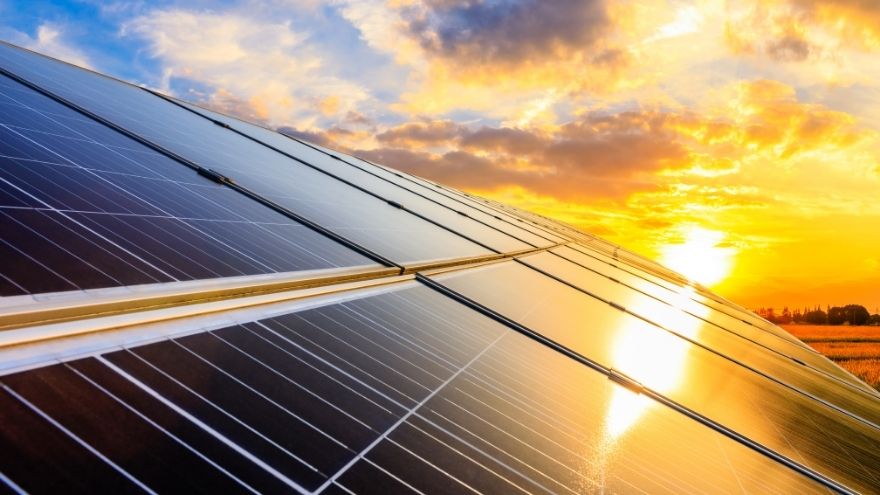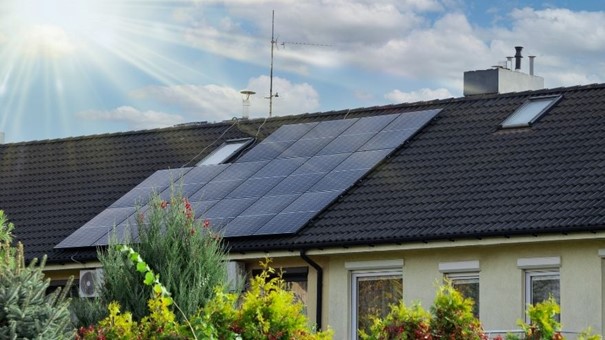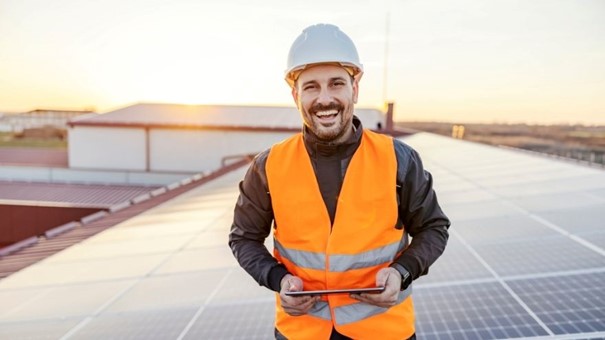Fires in photovoltaic installations are rare, but it is worth protecting yourself against the threat and knowing what to do if it does occur.

Data from the Fire Service show that approximately 18% of fires in residential buildings are the result of failures or defects in the electrical installation, and such events in PV micro-installations can be counted in per mille (according to research by TÜV Rheinland and BRE National Solar Center). However, the risk exists and extinguishing burning panels may pose a risk.
Check out photovoltaic panels in Onninen
Risk factors for fires in photovoltaic installations
The most common cause of fire is a short circuit in the installation, improper disconnection or lightning. Other reasons include poor installation, low quality of panels, improper electrical protection of the entire system, as well as the DC part (poorly selected cables, poor plugs, lack of fuses or switches).
A threat is, for example, poor connection of connectors on the DC side - mismatched plugs (e.g. from different manufacturers) may lead to an increase in temperature at the point of connection, which may result in ignition of an electric arc. This mainly happens when connecting the DC cables to the inverter (inverter) or the last module with the return cable. The inverter must not be mounted on flammable materials, in unventilated housings or without leaving a distance from other devices - they heat up during operation. If their use is necessary due to the connection of 3 or more chains (strings), poorly selected DC fuses are also dangerous.
Tightening the elements too strongly may damage them and may result in stripping the thread. For safety's sake, you should also limit their number as much as possible - the more, the greater the risk. It is worth periodically inspecting your home photovoltaic installation.

Lightning striking a solar panel or roof is not very likely, but if it does happen, the consequences can be catastrophic. A lightning rod is not enough for protection (many houses do not have one anyway). In this case, surge arresters are good protection. They are placed in the main or separate electrical outlets. They protect the home's power supply and devices. These are elements carrying high voltage - in the event of an overvoltage, their resistance automatically decreases and the accumulated energy is discharged to the ground. The arrester is connected to it with a PE protective conductor. The device should be connected to a supporting structure and a common earth electrode.
Modern inverters can also increase protection against flames. More and more often, they are equipped with the function of automatic automatic measurement of installation parameters, thus detecting the occurrence of electric arcs (AFCI), a significant fire hazard. If a fault is detected, the inverter may switch off. It will protect, but unfortunately, its re-activation requires a visit from a service technician. Therefore, some installers turn off this solution to prevent blockage. But the question is, is it worth the risk?
Check the security of the photovoltaic installation
Good practices for installing photovoltaic installations
Overall, proper design and proper installation will make your PV installation safe. Good components and a professional team practically guarantee that owners can sleep peacefully.
The Photovoltaic Industry Association has published a catalog of good practices for designers, which recommends installing panels and accessories taking into account the architecture of the building and its existing fire protection, using connectors of one type and manufacturer for DC connections, limiting their number, and running DC cables in metal cable channels without sharp edges and mark the building in accordance with the PN-EN 60364-7-712 standard. Such actions ensure the safety of the installation and compliance with fire safety requirements.
What to do in the event of a fire in a photovoltaic installation?
If a fire does occur, firefighters start by disconnecting the power supply to the electrical installation. This reduces the risk for them, but does not eliminate it - the panels generate electricity even after the inverter is disconnected from the grid, and water is usually used to extinguish it. Cable damage may be a threat, but the panels themselves are difficult to ignite. Therefore, extinguishing agents are directed at them, but in the event of a fire on the roof on which they are mounted.
It is worth remembering that illuminated panels generate electricity. A single one, depending on the power, reaches a voltage of 30-45 V. When modules are connected in series in micro-installations, it can be up to 1500 V.
Photovoltaic security
PV systems should be properly protected in both the AC and DC parts. They are selected during design. Circuit breakers and fuses (overcurrent protection), surge arresters and disconnectors are usually used. When extinguishing, they reduce the risk of electric shock. In turn, power optimizers connected to each panel reduce their voltage to a value close to 0 V during a power outage or disconnection of the inverter.
In practice, the owner of a photovoltaic installation should have a powder fire extinguisher. According to the recommendations of the Fire Service, it should contain at least 4 kg of powder. It allows for safe extinguishing from a distance of at least 1 m. It is best to keep it close to the inverter and the installation protection device.
Installations with a power exceeding 6.5 kW
In accordance with the latest Construction Law, Art. 29, the obligation to agree with a fire protection expert on compliance with the requirements of this protection applies to photovoltaic devices with an installed electrical power of more than 6.5 kW. The installation should also be reported to the Fire Department. These are the obligations of the investor (i.e. owner) or contractor. The notice should include a brief description of fire protection and a consistent drawing.

The arrangement should include:
- fire characteristics, i.e. a description of the reaction of PV elements to fire and the impact of their fire on the building;
- description of equipping PV devices with fire and lightning protection measures;
- running cables in the facility;
- cable reaction class to fire;
- information on countermeasures to prevent the fire from spreading to other buildings;
- photovoltaic installation plan with device location;
- marking the building with an information label about the installation (safety sign).
With smaller micro-installations, there are no such obligations.
Taking care of the safety, quality and reliability of photovoltaic installations is the responsibility of designers, manufacturers and installers. Before purchasing and installing a PV system, it is worth checking the offers of both products and services to choose proven solutions and an experienced installation team. It is definitely not worth saving on small elements, because they can often pose a threat. You should also take care of fire protection in your own home - panels are most often mounted on roofs, but those on the ground are usually nearby.
A professionally constructed PV installation is safe, appropriate security measures eliminate the risk of fire and related losses, and the benefits of photovoltaics cannot be overestimated. It is worth using security measures to use almost free electricity.